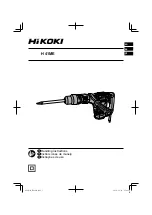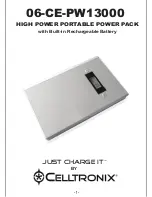
3
Technical Support: +44(0)23 9269 6638 (option 3)
PAK200790_02A Oct 2019 ©2019 ELMDENE INTERNATIONAL LTD
I
NSTALLATION
This product is designed for the use in automatic fire detection and fire alarm systems. If the PSE is used as a power
supply for Control and Indicating Equipment (CIE), the PSE shall be installed no further than 10cm from the CIE, and
close coupled by conduit. Where this is not possible, see
‘
DUAL PATH
’
section 41 for EN54-4 compatible equipment.
Mains Feed
1.
This unit must be fed from a mains power source via a separate (approved) disconnect device and fitted
with a fuse or other over-current protection device rated at 5A maximum.
Ensure that the disconnect device used has appropriate earth fault protection to the applicable
standard.
2.
Where the PSE is used to provide power to a fire alarm circuit, the mains isolation and disconnect device
should be provided solely for this purpose and be suitably mark
ed “FIRE ALARM –
DO NOT TURN OFF”.
All cabling should meet national and local fire system installation regulations, e.g. FP200 type cable for
high integrity installations.
3.
Where the PSE is used for other applications, it should be installed according to all relevant safety
regulations applicable to that application.
Cable Sizing
4.
Mains input cable must be to the applicable standard with a 3A, or greater, current capacity, i.e. 0.5
mm
2
nominal conductor area, having a minimum operating voltage of 300/500V ac.
5.
The low voltage output cable must be sized to carry the rated load current to the devices connected to
the PSE.
6.
Mains input and low voltage output cables should be routed to use different entry / exit holes in the
case. Cable glands should be used to protect cable sheaths from chafing. Ensure that the glands are
correctly sized (i.e. close fitting with respect to cable sizing). Note that the glands should meet a
minimum flammability specification of UL94 HB.
7.
All cabling should be securely fastened in position using a cable tie linked to the fixing points provided.
Mounting PSE enclosures
8.
Using the appropriate fixing points, fix enclosure to a suitable surface, ensuring that wall fixings are
appropriate to support its fully loaded weight.
9.
Knock-outs are provided in the case for mating with external trunking or conduit
10.
Ensure that all unused holes (on the rear of the case) are sealed to prevent the ingress of dust and
moisture




































